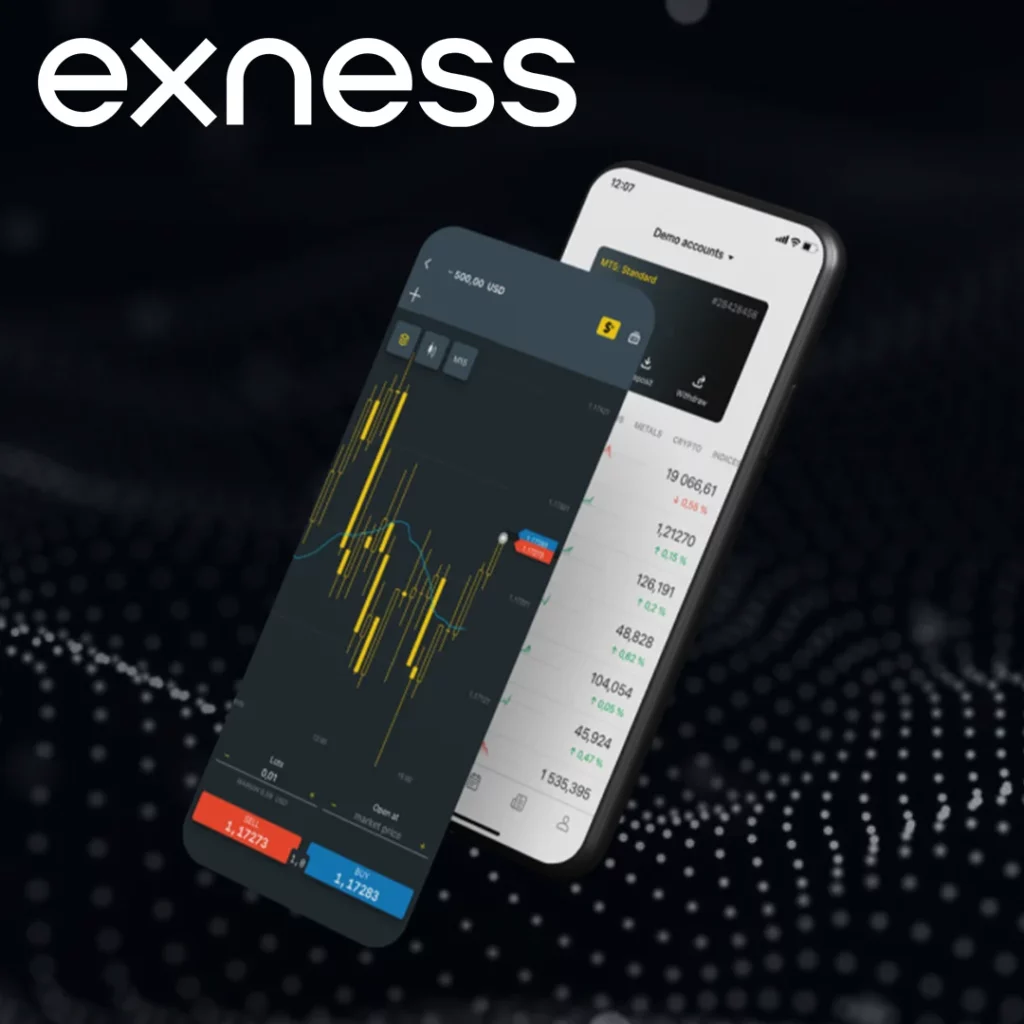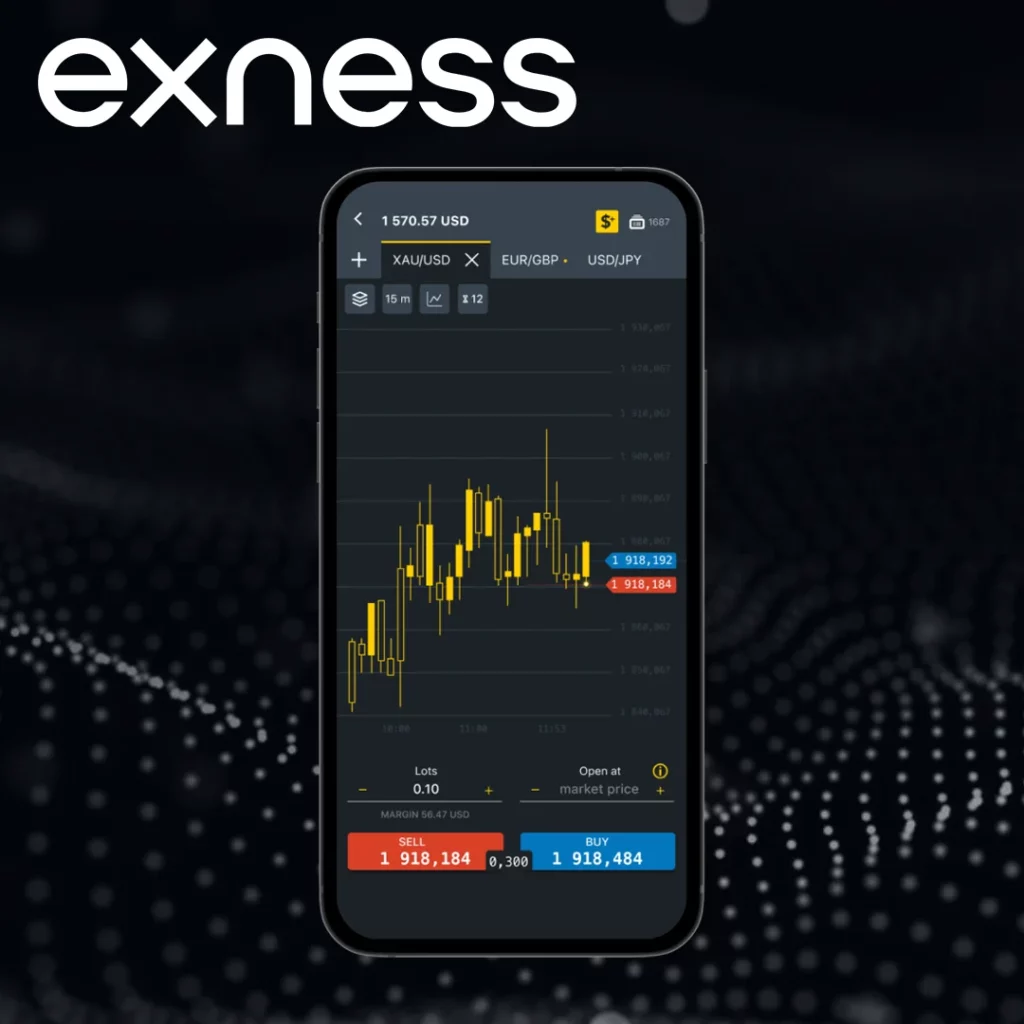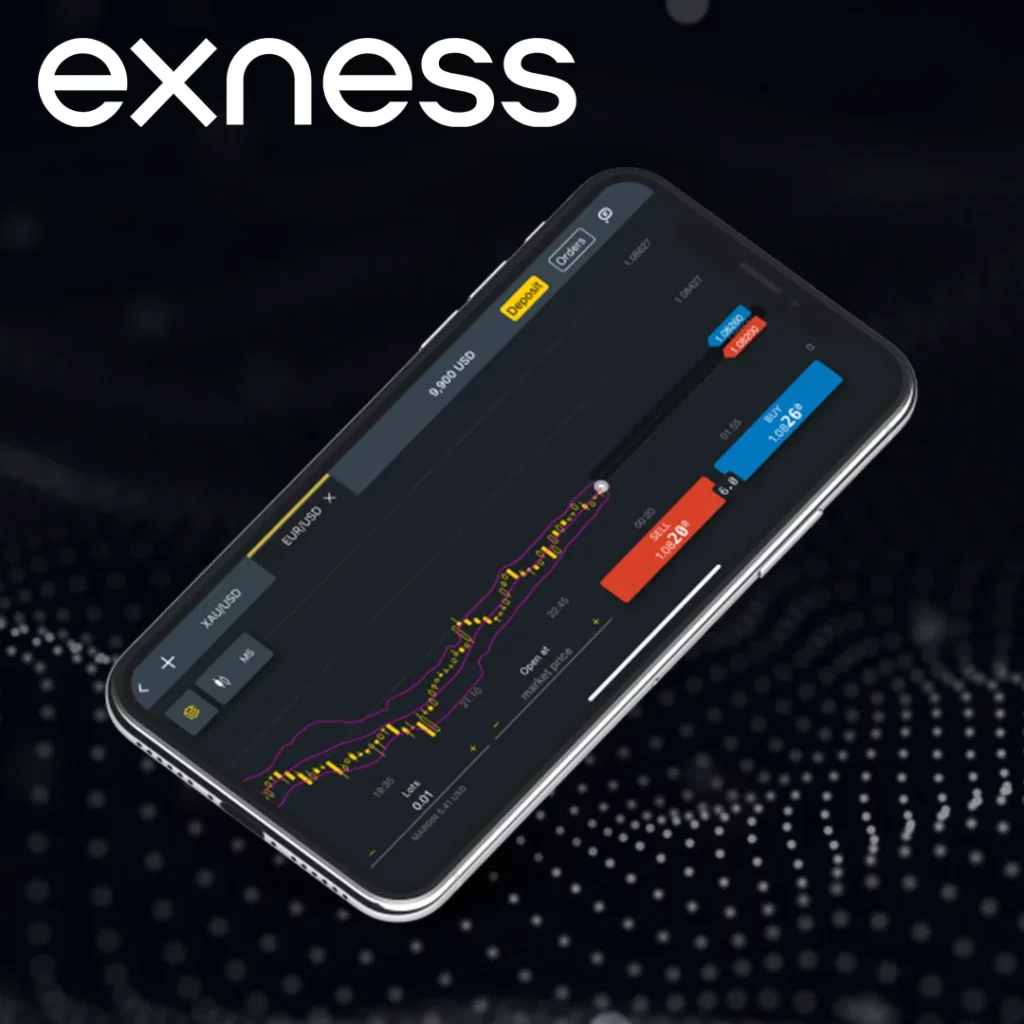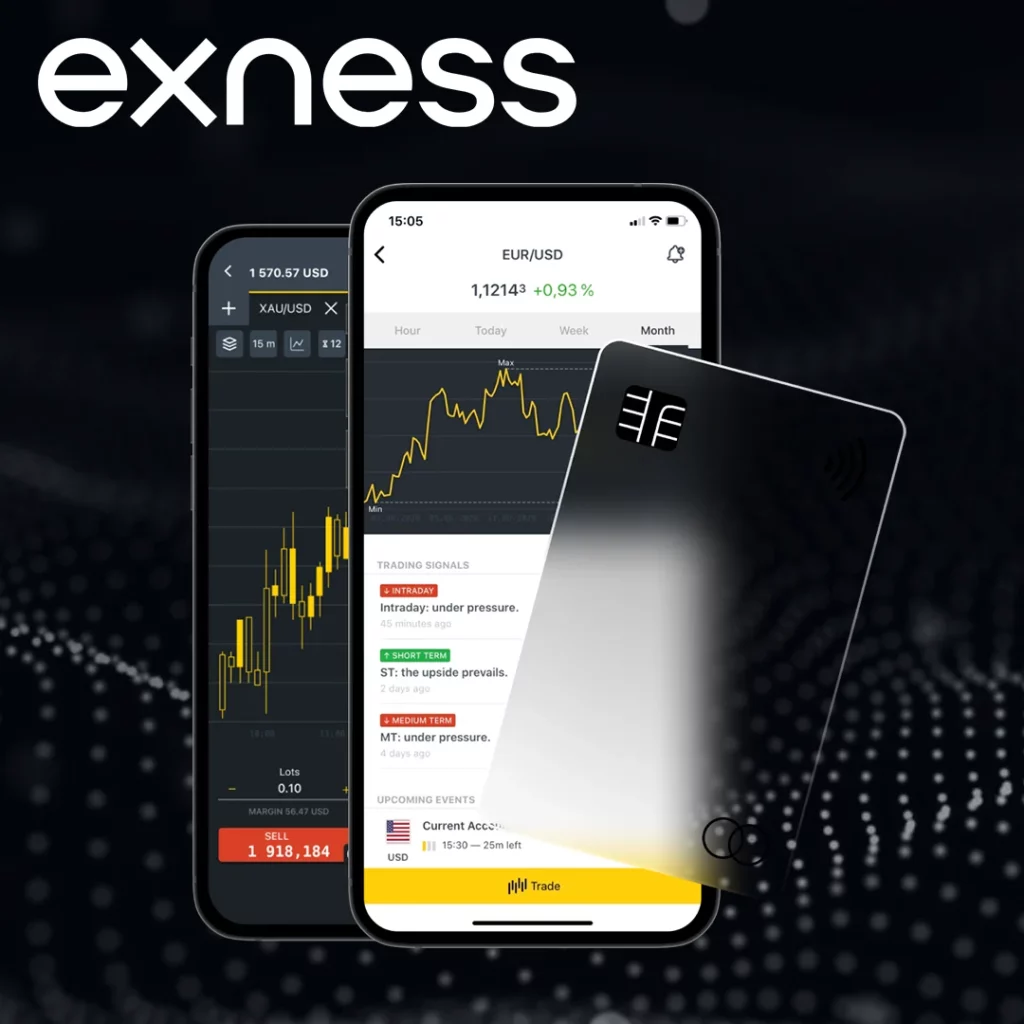Leverage is one of the most prominent features of forex and CFD trading. At Exness, traders can use some of the most competitive leverage options in the industry, designed to meet the needs of both beginners and professionals. This article delves into the leverage structure of Exness, highlighting its flexibility, applicable tools, and how it varies based on account type, trading volume, and regulatory restrictions.
What is leverage in forex and CFD trading?
Leverage allows traders to control larger market positions with less capital. For example, with a leverage of 100 times, traders can control a position of $10000 by investing only $100. Although this increases potential profits, it also amplifies potential losses and emphasizes the necessity of cautious risk management.
At Exness, leverage ranges from conservative levels to impressive 1: infinite, depending on account type, trading instruments, and trader qualifications. This unparalleled product makes Exness a leader in transaction flexibility.
Exness's unique leverage advantage
Standard account and professional account
Exness offers five core account types, each with different leverage settings and benefits tailored to the needs of different traders.
- Standard account:Suitable for new traders, providing unlimited leverage for forex and precious metals. The spread starts at 0.3 points, making these accounts highly cost-effective.
- Professional account:Designed for experienced traders, professional accounts offer leverage up to 1:2000. They offer faster execution speed and tighter spreads.
- Original spread and zero account:A professional account focused on cost efficiency. The leverage here also reaches 1:2000, with spreads starting from 0.0 points, making it very suitable for scalpers and intraday traders.
- Standard Cent Account:Offering unlimited leverage, this account is tailored for beginners who wish to practice their strategies with minimal capital exposure.

Specific tool leverage ratio
Exness sets leverage based on the type of trading asset. This ensures both competitiveness and risk control within a wide range of available tools:
| Instrument category | Example | Maximum leverage | note |
| Foreign exchange major currency pairs | EUR/USD, GBP/USD | 1: Unrestricted | High liquidity supports higher leverage ratios. |
| Small Types of Foreign Exchange | AUD/CAD, NZD/CHF | 1: Unrestricted | Suitable for diversified forex strategies. |
| Foreign exchange non mainstream currency pairs | USD/ZAR, EUR/TRY | 1:2000 | Compared to major currencies, it has higher volatility. |
| metal | USD/USD, XAG/USD | 1:2000 | Including gold, silver, platinum, and palladium. |
| Cryptocurrency | BTC/USD, ETH/USD | 1:100 | Due to high volatility, control leverage operations were carried out. |
| energy | UKOIL, USOIL | 1:200 | Leverage reflects the dynamics of the commodity market. |
| stock | Tesla, Apple | 1:20 | Designed for stable stock trading. |
| index | S&P 500, NASDAQ 100 | 1:100 | Allow diversification index exposure. |
Unlimited leverage
Exness was the first broker to introduce unlimited leverage, a groundbreaking feature that allows traders to open abnormally large positions with minimal margin requirements. This feature is particularly advantageous for high-frequency traders, scalpers, and those trading in high liquidity forex markets.
Key features of infinite leverage:
- Accessibility:Applicable to standard accounts and standard Cent accounts.
- Dynamic adjustment:Applicable to account balances below $1000.
- Use case:The most suitable for short-term trading strategies and experienced traders familiar with high-risk environments.
How does account balance affect leverage size
Exness adopts a dynamic leverage model, and as the trader's account balance increases, the leverage ratio will correspondingly decrease. This can protect traders and brokers from the impact of excessive risk.
| Account balance (USD) | Maximum leverage |
| Below 1000 | 1: Unrestricted |
| 1,000–10,000 | 1:2000 |
| 10,000–50,000 | 1:1000 |
| Over 50000 yuan | 1:200 |
This system encourages responsible trading while providing flexibility for small accounts.
Regional and regulatory restrictions on leverage
Exness operates globally, and the leverage ratio may vary depending on regulatory jurisdictions. For example:
- EU and UK:According to ESMA regulations, the maximum leverage ratio for retail traders is 1:30.
- Australia:ASIC stipulates that the leverage ratio for retail customers is limited to 1:30.
- Global market:For accounts outside of these jurisdictions, higher leverage is typically available, often reaching unlimited levels.
These regulatory restrictions ensure compliance while protecting traders in regulated markets.
The advantages and disadvantages of high leverage
- Enhance market riskHigh leverage allows traders to control positions much larger than their initial capital. This expands potential returns and provides opportunities to profit from relatively small price fluctuations in the market.
for exampleA trader account with a leverage of 1:500 can control a position worth $500000 with $1000, thereby amplifying the potential for returns.
- Optimize capital utilizationLeveraged trading only requires a small portion of the total trading amount as margin, allowing traders to free up capital for other purposes
- Diversify investments in multiple tools or markets.
- Maintain a healthy buffer margin to absorb market fluctuations.
- Actual resultsTraders can hold multiple positions in foreign exchange, metals, or cryptocurrencies simultaneously without occupying all their funds.
- Scalability of Small Fund TradersLeverage levels such as 1:500 or 1:2000 enable traders with limited funds to participate in larger market fluctuations, otherwise they will not be able to participate. This is particularly advantageous for traders who wish to grasp major market trends but have limited funds.
- Maximizing short-term opportunitiesIn a rapidly changing market, leverage allows traders to take advantage of intraday price fluctuations or news driven volatility without the need for significant upfront investment.
- Amplify lossesLeverage amplifies both profits and losses. Minor adverse changes in price can lead to significant losses and quickly erode traders' account balances.
for exampleA leveraged position of $500000, with a 1% unfavorable change, could result in a loss of $5000, far exceeding the trader's initial balance of $1000.
- Additional margin and stop lossHigh leverage increases the possibility of margin calls, where brokers require additional funds to maintain open positions. When the margin level is below the required threshold, stop loss will occur, forcing liquidation to prevent further losses.
- sceneTraders who use high leverage during market volatility may experience rapid price fluctuations, leading to the depletion of margin and triggering stop loss, closing positions at a loss.
- overtradeThe convenience of high leverage may tempt traders to establish multiple large positions, thereby taking on excessive risks. This increases the likelihood of losses and creates emotional stress, often leading to irrational decision-making.
for exampleTraders may overestimate their ability to manage multiple leveraged trades, leading to margin depletion and forced liquidation.
- Volatility riskIn highly volatile markets such as cryptocurrencies or certain special foreign exchange currency pairs, high leverage may exacerbate the impact of sudden price fluctuations, and even small fluctuations can cause rapid losses.
- psychological pressureThe prospect of obtaining huge profits from leveraged trading may lead to greed, while the fear of expanding losses may cause panic. Both of these emotions can lead to incorrect trading decisions, such as prematurely exiting profitable trades or holding loss positions.
How to use leverage responsibly in Exness
Adopting a sound risk management plan

Risk management is the cornerstone of responsible trading, especially when using high leverage. A well structured plan should include:
- Stop loss order:
Setting a stop loss level can ensure that if the market trend is opposite to your position, the trade will automatically close, thereby limiting potential losses. For example, in a highly leveraged position, setting a stop loss order at a distance of 0.5% from the entry price can prevent significant drawdown of the account. - Profit taking orders:
Similar to stop loss orders, take profit orders lock in profits when market conditions are favorable to you, helping you exit positions at a predetermined profit level. - Risk return ratio:
Ensure that each transaction has a favorable risk return ratio (e.g. 1:3), where potential profits outweigh potential losses. - diversification:
Avoid investing all capital into a single transaction or market. Spread your positions across different tools to reduce overall risk.
Margin requirement
The margin requirement specifies the minimum capital required to open and maintain a leveraged position. Exness adopts a dynamic margin system that adjusts based on different tools and leverage levels.
- Foreign exchange:
The margin requirement for major currency pairs such as EUR/USD is as low as 0.5%, allowing for the use of larger leverage. For example, to control a $100000 position with a leverage of 1:200, only $500 is needed as margin. - Metal:
Due to price volatility, metals like gold (XAU/USD) typically have higher margin requirements, typically starting at 1%. This reflects their greater price fluctuations compared to foreign exchange. - Cryptocurrencies, Stocks, and Indices:
These tools typically have stricter margin requirements, reflecting their inherent volatility and regulatory limitations. For example, cryptocurrency pairs like BTC/USD may require a margin of 10% or higher.
By understanding these requirements, traders can better manage their accounts and avoid margin calls or forced liquidation.
Use smaller lots for high leverage
By trading smaller lots, the risk of significant losses is significantly reduced, while still allowing traders to take advantage of leverage opportunities. For example:
- Scenario 1 (High Volume):
A one handed position of EUR/USD (100000 units) with a leverage of 1:500 requires a margin of $200. A 1% unfavorable price change may result in a loss of $1000 and potentially clear smaller account balances. - Scenario 2 (smaller batch size):
A 0.1 position (10000 units) in the same currency pair only requires a margin of $20, and a 1% price fluctuation will only result in a loss of $100. This method leaves more room for recovery or additional transactions.
Smaller batches provide greater flexibility and reduce the likelihood of account depletion.
Understand market trends

Market conditions play a crucial role in leveraged trading. Volatility, liquidity, and major news events may cause rapid price fluctuations, which can have a significant impact on leveraged positions.
- Economic News:
Pay attention to key events on the economic calendar, such as interest rate decisions, inflation reports, and employment data. These events may lead to sharp and unexpected fluctuations in prices. - Volatility indicator:
Use tools such as Average True Range (ATR) or Bollinger Bands to assess market volatility and adjust leverage accordingly. High volatility markets may need to reduce leverage to avoid rapid losses. - Market Trends:
Aligning with broader market trends. Trading against the trend increases risk, while trading with the trend often brings more favorable results.
The responsible use of leverage in Exness requires a combination of knowledge, strategy, and discipline. By adopting robust risk management practices, understanding margin requirements, and constantly monitoring market conditions, traders can harness the power of leverage while minimizing their risks. Ultimately, responsible use of leverage is key to achieving sustainable success in trading.

Real world example: application of leverage
Scenario Overview
The trader has a $500 account balance and has chosen a leverage ratio of 1:500 to trade one of the most liquid currency pairs in the forex market, the Euro/USD. Through thisleverageTraders have gained the ability to control positions far beyond their initial capital.
- Position size calculation:
By using leverage, the trader's position size becomes:
$500 × 500=$250000 $500 × 500=$250000 $
This means that although traders only have $500 in their accounts, they actually control $250000 in the foreign exchange market. - Margin requirement:
The required margin to open this position is calculated as follows:
Position size ÷ Leverage=$250000 ÷ 500=$500
This will use the entire balance in the trader's account as margin, leaving no available margin for additional trading or absorbing potential losses.
Potential profit or loss
leverageAmplify profits and losses. Let's consider a 1% price change in the Euro/USD exchange rate:
- Profit calculation (up 1%):
If the price moves 1% in favor of the trader, the return is:
$250000 x 0.01=$2500. $250000 x 0.01=$2500
This represents a 500% return on the trader's initial $500 balance. - Loss calculation (decrease by 1%):
On the contrary, if the price drops by 1% and is opposite to the trader's position, the loss is:
$250,000 × 0.01 = $2,500
This exceeds the trader's total account balance, triggering additional margin or forced liquidation. The account balance will be reduced to zero, but thanks to Exness' negative balance protection mechanism, traders' losses will not exceed their initial deposit amount.
Additional considerations
Free margin and risk:
Due to the trader's entire $500 balance being used as margin, there is no remaining available margin to withstand even minor adverse price changes. A market drop of only 0.2% ($500) will trigger a margin call.
The meaning of volatility:
The foreign exchange market may experience rapid price fluctuations due to economic news, central bank decisions, or geopolitical events. Highly leveraged positions like this are extremely sensitive to such fluctuations.
Alternative strategy:
Traders can choose smaller lots, such as 0.5 lots (50000 units), instead of the full 1 lot (100000 units). This reduces the margin requirement to $250, leaving $250 as a free margin to buffer potential losses.
Key lessons learned from this example
Leverage as a double-edged sword:
Although leverage can amplify profits, it can also amplify losses, potentially leading to a loss of the entire account balance during market fluctuations.

Risk management:
- Use stop loss orders to limit potential losses.
- Avoid using the entire balance as margin to maintain available margin and reduce the risk of additional margin.
- Engage in leveraged trading based on your risk tolerance and strategy.
Traders must consider margin requirements and ensure that their positions are appropriate in relation to the size of their capital.
Conclusion: Leverage as a Successful Tool
Exness' leverage structure provides what everyone needs - from novice traders trying low-risk strategies to experienced professionals executing high-frequency trades. The availability of unlimited leverage, combined with account specific flexibility, makes Exness an outstanding choice for global traders. However, the power of leverage requires a responsible approach, which emphasizes the importance of education and risk management.
With the right knowledge and tools, Exness' leverage selection empowers traders with the ability to maximize market potential while effectively managing inherent risks.

Trade immediately with trusted broker Exness
Personally understand why Exness is the preferred broker for over 800000 traders and 64000 partners.
frequently asked questions
What is high leverage in trading?
High leverage enables traders to control position sizes larger than their account balance by borrowing funds from brokers, thereby amplifying profits and risks.



